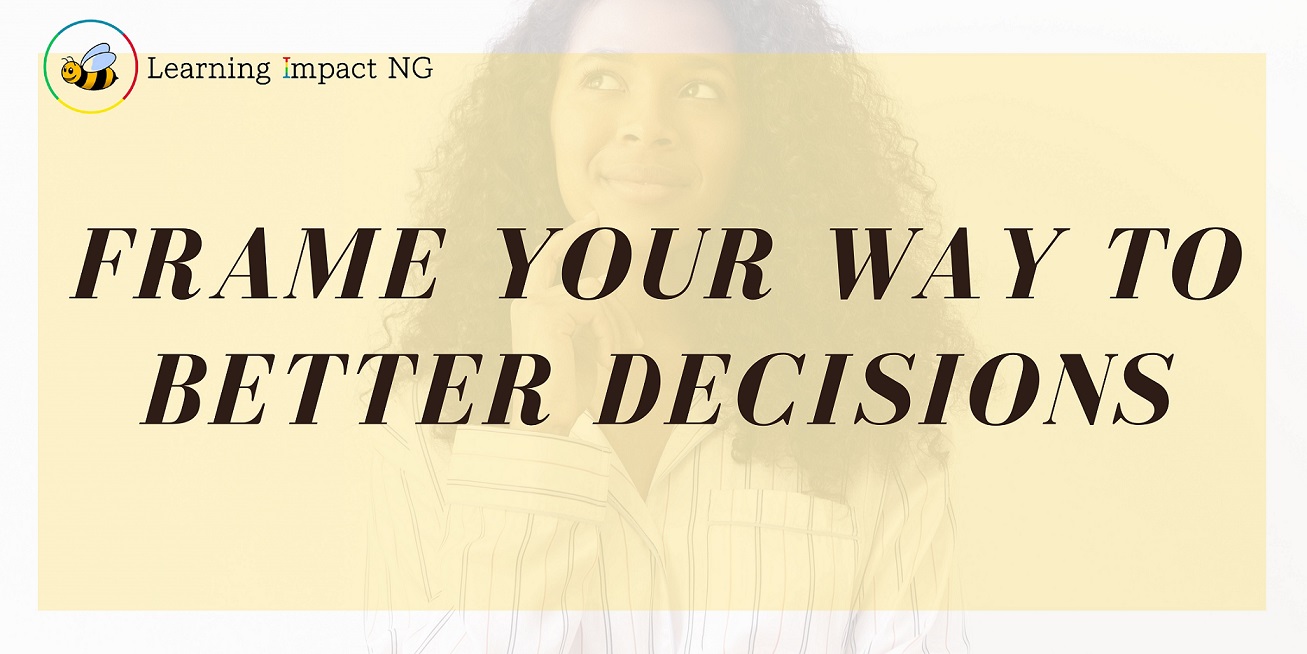I have been asked on many occasions by leaders, managers, and employees in organizations about what makes a decision a good one or a bad one, and what it really takes to make better decisions. In reality, we evaluate decisions based on the results we get - if they work out, we say it was a good decision, and if they do not, then it is a bad decision. I have found that two things are even more important than the results - the process of decision-making and then how you managed the consequences of the decision. This is because in many instances, what seems like a good result in the short term may end up in the long term looking like a bad result. I have also enjoyed watching the “Bush Dynasty Series” on DSTV during the #Lockdown so please understand my reference to them as we go along.
Take the case of the two Bush Presidencies in the United States. George H W. Bush (the father) decided very reluctantly to step into the war with Iraq after Iraq invaded Kuwait in 1990. He eventually did and in a matter of days had pushed back the Iraqi army with negligible American casualties. He had an opportunity thereafter though to invade Iraq and depose Saddam Hussein - he declined on the premise that this was outside his original mandate - he framed his mandate as an “opportunity” to “free Kuwait from Iraq” and once he delivered this he ended the “war”. In the short term, many viewed this as a good decision and most people were satisfied.
Later, the younger, George W. Bush (the son) decided to finish off from where daddy had left off, framing the 911 attacks as a “threat” from Iraq and with what we now acknowledge to be poor intelligence, invaded Iraq in 2003 Operation “Shock and Awe”. Well, he captured Saddam Hussein, took over the Government of Iraq, in what seemed like a success in the short-term, but ended up leading to the longest war in modern history - lasting till this moment, almost 20 years later with thousands of lives lost on all sides and many splinter wars in Afghanistan and Syria as well as the rise of terrorist insurgency all over the world.
So, one big lesson I have learned is that framing plays a significant role in how we make decisions - and I will explain. Frames are mental models that we use to make sense of the complex world around us. The way we frame a situation affects the way we deal with the situation - there are many frames that we can give to a situation, but one simple categorization is framing as either a “threat” or “opportunity”. Studies show that when we frame a situation as a threat, we act RIGIDLY (like Bush Jnr), but when we frame it as an opportunity we act FLEXIBLY and ADAPTIVELY (like Bush Snr).
Framing as a threat leads us to allocate more resources to a situation (Bush Jnr) but framing as an opportunity leads us to use the resources better (Bush Snr). It is therefore recommended that when faced with complex decisions, we should use competing frames (threats and opportunities) to get the best results.
In reality, we all have different frames when we are faced with a situation, so how do we use frames to improve our decision-making? I will recommend three distinct actions:
1. Leaders should be careful about imposing their frames on the rest of their team members. So, you should actually hold back on discussing your frame so that you do not restrict the thinking of your colleagues when you are deliberating on a complex situation. I call it coming to a meeting with an empty slate.
2. In addition, we should use multiple frames each time we are faced with a complex decision because each of the different frames creates different options which we can evaluate and choose from. In this regard, I particularly find Edward De Bono’s ‘Six Thinking Hats” very useful.
3. Finally, we should surface our implicit assumptions about situations that create our frames and then test and probe them properly before allowing them to play a role in the decisions that we make.
So, decision-making is never easy, but if there is anything I have learned is that there are many different ways of looking at a situation (frames). To get the best decisions, we should manage these competing frames properly and use techniques that actually bring out the best of these frames and the various people involved in the decision.



Leave a comment